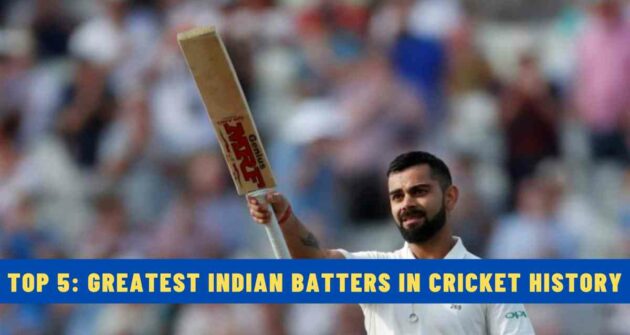In recent times, there’s been a lot of discussion happening around the batting strike rate, especially in T20 cricket.
So what’s the fuss all about? Why is the batting strike rate important? And how to calculate it?
Let’s understand the meaning of the batting strike rate and its importance in cricket.
Batting Strike Rate in Cricket
Batting strike rate is an important metric in cricket as it helps understand how fast a batter scores runs. Batting strike rate points to the average runs a batter scores per 100 balls they face in an innings or in their career.
If a batter has a higher strike rate, it means they score runs quicker, taking more risks and finding the boundaries more often. Such batters are a headache for the opposition bowlers, as they blow away the bowling attack with their powerful hitting.
But the same strike rate takes a back seat in the longest format — Test cricket — as batters take a cautious approach while batting rather than the aggressive mode. So batters don’t have high strike rates in Test cricket.
But there have been some exceptions when a few batters broke the shackles and went into attack mode, striking above 100. Virender Sehwag, Brendon McCullum, Ben Stokes, and Rishabh Pant are some of the best examples of it.
When it comes to ODIs and T20s, batting strike rate does play a role in a batter’s overall performance, more so in T20s. Both formats require batters to score runs at a faster pace with limited resources on offer. So batters tend to have the highest strike rates in limited-overs cricket.
Now that you understand the batting strike rate, let’s see how it’s calculated.
Also Read | What is Slow Over Rate Rule in Cricket?
How to calculate batting strike rate?
Computing the batting strike rate is a simple calculation. You need 2 values to determine a batter’s strike rate.
Go to a batter’s profile. Note down the total runs scored and the total balls faced by them.
Now, divide the total runs scored by the total balls faced and multiply it by 100. And voila, you will get the strike rate.
Here’s the batting strike rate formula:
Batting Strike Rate = (Total Runs Scored / Total Ball Faced) X 100
Let’s understand it with an example.
We will calculate the career batting strike rate of Rohit Sharma in T20I cricket. The former Indian T20I captain scored 4231 runs from 3003 balls.
Now if we divide 4231 by 3003, we get 1.40. Multiply the output by 100, and Rohit Sharma’s strike rate comes out as 140.
You can calculate the batting strike rate for an individual innings as well. The whole process is the same; you just need the numbers of that particular innings.
For example, in April 1986, the West Indies’ Vivian Richards blasted an unbeaten 110 runs off 58 balls against England in a Test innings. If we divide 110 by 58 and then multiply it by 100, we get 189.65 as Richards’ strike rate.
What is a good batting strike rate in cricket?
As mentioned earlier, the strike rate is not much of an importance in Test cricket. So anything above 50-60 is a decent strike rate in Tests.
In ODI cricket, batters have strike rates in the range of 80 to 100. But in T20s, a strike rate of 120 is okayish, while anything above 130-140 range is pretty good.
Read Next | What is Batting Average in Cricket?











